
Intro
Also called Bhutia Pony, Bhote Ghoda, Bhutan Pony, Bhutani, and Bhutua Pony, the Bhotia Pony is well suited to mountainous terrain that most other breeds could never navigate.
Origins
Found in Nepal, Bhutan and the Sikkim and Darjeeling regions of India. Similar to the native Tibetan pony and their bloodlines have crossed more than once. As a result it is not uncommon for the Bhutia, Spiti and Tibetan breeds to be called “Indian Country Bred” ponies.
Due to a lack of any regimented breeding programs and poor nutrition, these animals tend to be small and not as robust as breeds in lush areas.
Features
Average height 13 – 13.2 hands
Physique
Neck is short and thick
Body is compact
Back is strong
Legs are coarse and hairy, but strong
Hooves are open at the heels
Mane and tail are very long and heavy
Body is compact
Back is strong
Legs are coarse and hairy, but strong
Hooves are open at the heels
Mane and tail are very long and heavy
Traditional Colors
Temperament
Generally willing and quiet with strong character
Use
Pack animal
Transportation
Light agriculture work
Transportation
Light agriculture work
Bidet Horse
Origins
The Bidet breed has long since been extinct & their presence in France was pre-Roman times. Their bloodlines play an important part in the Norman horse.
This is a stocky little breed that could do anything, but was primarily used as a saddle horse.
There is very little information about this ancient breed.
Bigourdan Horse
Intro
The Bigourdan horse is an Anglo-Arabian with Iberian influence descended from the Tarbes horse, and the Navarrine, (which is a direct descendant of the Andalusian).
Origins
An Anglo-Arabian, Navarrine blood was the most important additional bloodline, however their height was rarely above 15 hands. Early in the 19th century the blood of taller English Thoroughbred animals was added to the mix creating the Bigourdan breed.
Later this breed was dissolved through cross-breeding into the Selle-Francais breed of France.
Bityug

Intro
The Bityug (or Bitcuk in Turkey) was a handsome trotting breed that originated in Russia by Tsar Pierre Le Grand.
Origins
Named for the Bityug River, this breed was developed from local Voronezh steppe horses crossed to Danish, Dutch & Orlov Trotter. The resulting individuals were then crossed with the Heavy Trotters from the same area & the breed developed into a capable, handsome horse with trotting strength and speed. They resembled other trotters of the area, but with a more classic head appearance.
By the early 20th century the breeds numbers were rapidly declining. Then by the end of the century agricultural demand grew for larger more robust animals and the Bityug was crossed with draft breeds & trotters. The resulting animals blurred type lines and was detrimental to the original bloodlines.
Local peasant farmers valued these animals and continued to breed them locally. Not to mention that stock from this breed was used to enhance many different bloodlines. The present day Voronezh horse retains many characteristics associated with the Bityug breed.
Features
Average height 15 – 16 hands
Physique
Medium size & firm constitution
Traditional Colors
Temperament
Calm & intelligent
Use
Agriculture
Cart horse
Transportation
Enhancing other bloodlines
Cart horse
Transportation
Enhancing other bloodlines
Black Forest Horse
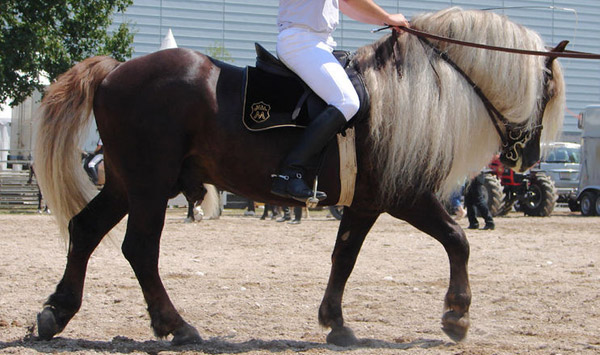
Intro
Also called Schwarzwälder Kaltblut, St. Märgener, and Wälderpferd, the Black Forest Horse is a small, tough draft breed with a high fertility rate and a long life span.
Origins
This breed is similar in looks to a large Haflinger or a small Noriker and is well suited for the intense climate of the highlands.
In 1896 an association was formed to standardize and document the breed, it was established that only Belgian draft blood would be added to increase size. However many locals continued to use native stallions, wanting to preserve the characteristics they found valuable on their farms. During WWI the authorities realized that the Belgians were not suiting the needs of the locals and the studbook was opened to local stock.
Features
Average height 14.2 – 15.3 hands
Nimble and lively
Nimble and lively
Physique
Short, refined head with small ears and large eyes
Short, muscular neck
Short back
Shoulders are powerful but not too bulky
Broad, deep chest
Legs are trim and strong with little feathering
Short, muscular neck
Short back
Shoulders are powerful but not too bulky
Broad, deep chest
Legs are trim and strong with little feathering
Traditional Colors
Dark chestnut coat with a flaxen modifier | grey | bay
Temperament
Good natured and gentle
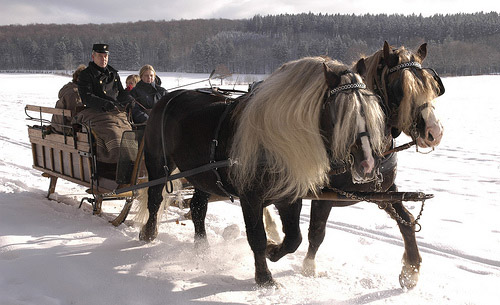
Use
Carriage horse
Riding horses
Agriculture work
Riding horses
Agriculture work
Helpful Links
*All links open in a new window
Where to Buy
Video
Black Sea Horse
Intro
Also called the Chernomor, the Black Sea Horse is very rare and only a small number of pure blood still exist.
Origins
Native to the coastal areas of the Krasnodar region of Russia, the development of the Black Sea Horse began at the end of the 18th century.
They are of saddle type and carry Arabian, Nogai, Kabarda (among other mountain breeds), Don and Thoroughbred blood. Throughout the years a great deal of bloodline dilution has occurred in the hopes of strengthening the breed.
Three types
Massive – With blood of light draft breeds
Light saddle – Highly influenced by Arabian, Don and Thoroughbred blood
Local – Preserving traits of native mountain horses
Massive – With blood of light draft breeds
Light saddle – Highly influenced by Arabian, Don and Thoroughbred blood
Local – Preserving traits of native mountain horses
Almost extinct in pure form and the stock has been absorbed into some of the other local breeds.
Features
Average height 15 – 15.2 hands
Incredible endurance
Incredible endurance
Physique
Medium sized head with straight or slightly roman profile
Neck is medium in length and straight
Back is straight
Neck is medium in length and straight
Back is straight
Traditional Colors
Temperament
Calm temperament
Use
Riding horse
Agriculture work
Transportation
Agriculture work
Transportation
Blazer Horse
Intro
The Blazer Horse was deveolped over a period of years by Neil Hinck from Star, Idaho. The result of his dream to breed a smart, strong, easy-moving and gentle working horse was a stallion he named Little Blaze.
Origins
The bred began in the late 1950′s and Little Blaze became the foundation sire, he lived to be 39 years old.
To be registered as a Blazer Horse, (even today) the horse must have at least one registered parent with a documented line to Little Blaze.
The Blazer is a low maintenance & highly adaptable horse who seems to excel at everything they try. Every horse that is registered as Blazer is scrutinized by a team from the registry & no horse is registered before age two.
Features
Average height 13 – 15 hands
Physique
They are bred to exact muscle placement – length of back, length of cannon bone, and other characteristics that maximize its usefulness.
Traditional Colors
Blazer Horses must have a solid coat color with dark under-laying skin. Spotted coat patterns (appaloosa, pinto & roan) are not accepted into the registry.
black | chestnut | bay | dun | buckskin & palomino
black | chestnut | bay | dun | buckskin & palomino
Temperament
Balanced
Gentle & willing
Gentle & willing
Use
Ranch work
Eventing Horse
Show Horse
Pleasure animal
Endurance horse
Eventing Horse
Show Horse
Pleasure animal
Endurance horse
Helpful Links
* all links open in a new window
Blazer Horse
Blazer Horse Association
Blazer Horse
Blazer Horse Association
Where to Buy
Video
Boerperd
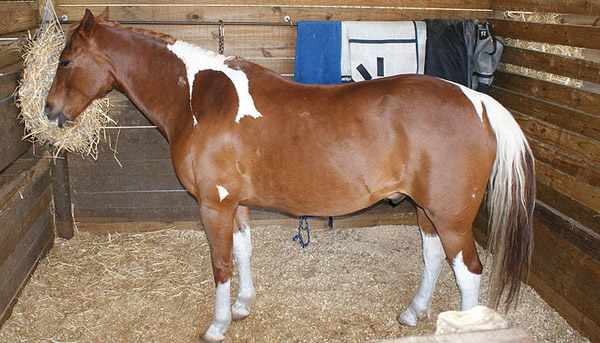
Intro
Also called South African Boerperd, and the Kaapse Boerperd, the Boer horse comes from the same stock as the Basuto pony. However the Boer is found in a much milder climate allowing them to grow more robust.
Origins
Originated from the Cape Horse of South Africa, this breed also displays characteristics of Flemish, Hackney and Cleveland Bay animals imported to the area.
The Boerperd Society of South Africa was established in 1973 to preserve and document the bloodlines of the breed. Today these animals are rare and found in isolated herds in Transvaal, Natal, Eastern Free State and the Cape Province.
Features
Average height 14 – 16 hands
Calm and ambitious
Calm and ambitious
Physique
Head has flat forehead and prominent eyes profile is straight or slightly concave
Neck is average length and well-formed
Legs are strong, dry and muscular
Hooves are hard and sound
Neck is average length and well-formed
Legs are strong, dry and muscular
Hooves are hard and sound
Traditional Colors
Temperament
Trustworthy and alert
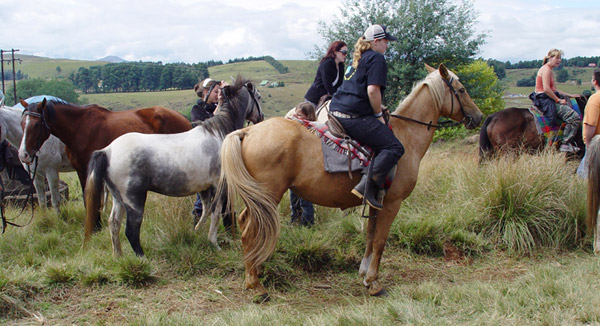
Use
Agriculture work
Endurance horse
Endurance horse
Helpful Links
*All links open in a new window
Cape Boerperd Breeders Society
Cape Boerperd Breeders Society
Where to Buy
Boer Horse Studs
Video
Bolivian Pony
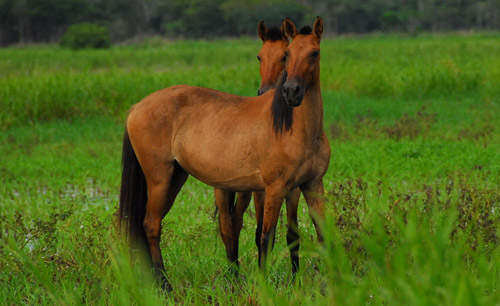
Intro
The Bolivian Pony or Sunicho is a tough little pony native to the highlands of Bolivia. Today their status is considered crucial & their numbers are very small.
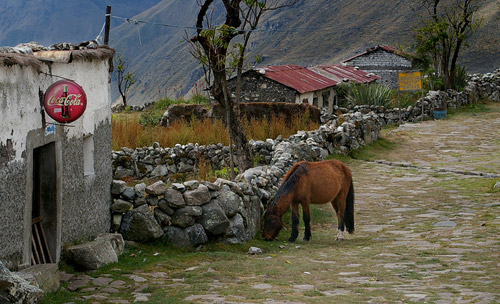
Origins
This breed is descendant from the Iberian horses and a close brother to the Criollo developed in Bolivia. They were very important for conveyance before the agricultural reform of the 1950′s, but since then have been replaced by the donkey.
Features
Average height 12.2 – almost 13 hands
A handsome pony
A handsome pony
Physique
Body is well-proportioned
Except for the neck, which is thin at the top & thick as it joins the chest
Shoulders & chest appear as one
Withers are prominent
Back is short & croup rounded
Except for the neck, which is thin at the top & thick as it joins the chest
Shoulders & chest appear as one
Withers are prominent
Back is short & croup rounded
Traditional Colors
Use
Pack animals
Transportation
Transportation

No comments:
Post a Comment